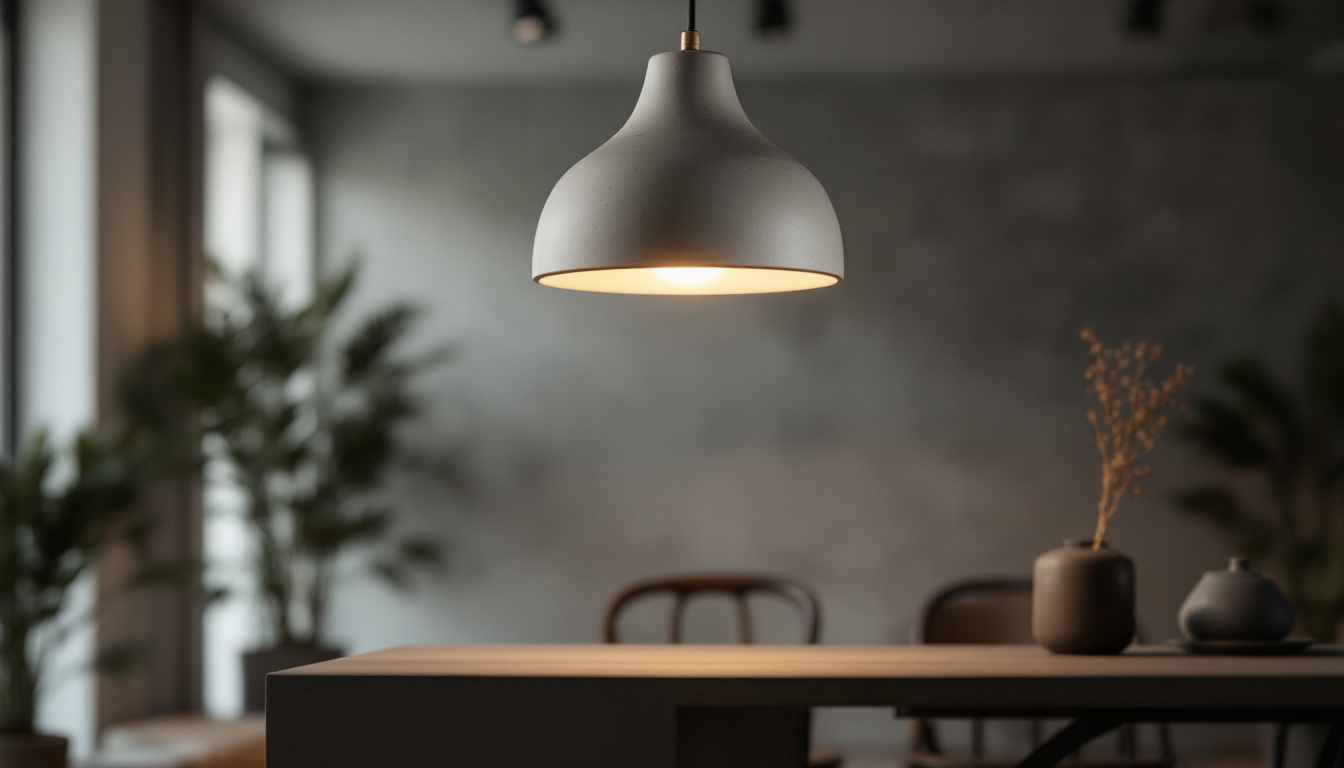
In the world of horticultural lighting, understanding the intricacies of grow lamp fixtures is essential for any lighting contractor. Training your team effectively can not only enhance their skills but also improve the quality of service provided to clients. This article delves into the key aspects of grow lamp fixtures and offers insights on how to train your team effectively.
Grow lamp fixtures are specialized lighting systems designed to promote plant growth indoors. They come in various types, each serving a unique purpose. Understanding the different types of fixtures is crucial for any contractor aiming to provide comprehensive lighting solutions.
There are several types of grow lamp fixtures, including LED, fluorescent, and high-intensity discharge (HID) systems. Each type has its advantages and disadvantages, which should be understood thoroughly by your team.
LED fixtures are increasingly popular due to their energy efficiency and long lifespan. They emit specific wavelengths of light that are beneficial for plant growth, making them a preferred choice for many indoor growers. On the other hand, fluorescent fixtures are often used for seedlings and clones, as they provide a gentle light that encourages healthy growth. HID systems, while powerful, require more energy and produce significant heat, necessitating careful management.
In addition to these common types, there are also specialized fixtures such as ceramic metal halide (CMH) lights, which offer a full spectrum of light and are known for their ability to mimic natural sunlight. This feature makes them particularly advantageous for flowering and fruiting stages of plant growth. Furthermore, there are also hybrid systems that combine different technologies to optimize growth conditions, catering to the specific needs of various plant species. Understanding these advanced options can help contractors tailor their offerings to meet the diverse needs of indoor growers.
Understanding the components of a grow lamp fixture is equally important. Key components include the lamp itself, the reflector, and the ballast. Each part plays a vital role in the fixture’s overall performance.
The lamp is the source of light, while the reflector helps to direct that light towards the plants. The ballast regulates the electrical current to the lamp, ensuring optimal performance. Training your team to recognize and understand these components will enhance their ability to troubleshoot and maintain the fixtures effectively.
Additionally, many modern grow lamp fixtures come equipped with advanced features such as dimming capabilities and programmable timers, allowing for more precise control over light cycles. These features can significantly impact plant health and growth rates, as they enable growers to simulate natural day-night cycles more accurately. Moreover, some fixtures include built-in cooling systems to manage heat output, which is essential for maintaining an optimal growing environment. Familiarizing your team with these advanced components ensures they can provide clients with the most efficient and effective lighting solutions available in the market today.
Training is fundamental in ensuring that your team is knowledgeable about grow lamp fixtures. Proper training not only enhances their technical skills but also boosts their confidence in dealing with clients.
Technical skills are essential for any lighting contractor. Training sessions should focus on the installation, maintenance, and troubleshooting of grow lamp fixtures. Hands-on training can be particularly effective, allowing team members to gain practical experience.
Incorporating real-life scenarios during training can prepare your team for common issues they may encounter in the field. For instance, understanding how to replace a faulty ballast or adjust the height of a fixture can make a significant difference in their efficiency and effectiveness. Additionally, familiarizing the team with various types of grow lamps—such as LED, HID, and fluorescent—will help them understand the specific requirements and advantages of each type, enabling them to make informed recommendations to clients.
Moreover, staying updated with the latest advancements in grow lamp technology is crucial. Training programs can include modules on energy efficiency, light spectrum optimization, and the environmental impact of different lighting options. This knowledge not only empowers the team but also positions your company as a leader in sustainable practices within the horticultural lighting industry.
A well-trained team instills confidence in clients. When your team is knowledgeable about grow lamp fixtures, they can provide accurate information and recommendations. This not only enhances the client’s experience but also builds trust in your company.
Encouraging team members to engage in continuous learning can further enhance their expertise. Providing access to industry resources, such as webinars or workshops, can keep them updated on the latest trends and technologies in horticultural lighting. Additionally, fostering a culture of knowledge sharing within the team can lead to collaborative problem-solving and innovative solutions, which can be particularly beneficial when addressing complex client needs.
Furthermore, equipping your team with effective communication skills is equally important. Training should include modules on how to articulate technical information in a way that is accessible to clients, ensuring that they feel informed and empowered to make decisions about their lighting solutions. This approach not only enhances client satisfaction but also encourages long-term relationships and repeat business, as clients are more likely to return to a company that they trust and feel comfortable with.
Implementing effective training techniques can significantly improve the knowledge and skills of your team. Various methods can be employed to cater to different learning styles and preferences.
Organizing workshops and seminars can provide a structured learning environment for your team. These sessions can cover a range of topics, from the basics of grow lamp fixtures to advanced troubleshooting techniques.
Inviting industry experts to speak can add value to these sessions, offering insights that may not be readily available through standard training materials. Additionally, hands-on demonstrations can help reinforce the concepts discussed, making the learning experience more engaging.
In today’s digital age, online training resources are invaluable. Providing access to online courses, videos, and tutorials can allow team members to learn at their own pace. This flexibility can be particularly beneficial for those who may not be able to attend in-person training sessions.
Creating a library of resources that team members can refer to as needed can also be advantageous. This way, they can revisit specific topics or concepts whenever they require clarification or additional information.
Establishing a training schedule is crucial for ensuring that all team members receive the necessary training. A well-structured schedule can help maintain consistency and ensure that training is prioritized within the organization.
Before creating a training schedule, it is essential to identify the specific training needs of your team. Conducting assessments or surveys can help determine areas where additional training is required. This information can guide the development of a tailored training program that addresses the unique needs of your team.
Regularly revisiting and updating these assessments can ensure that training remains relevant and effective over time. As new technologies and techniques emerge, it is vital to adapt the training schedule accordingly.
Setting clear training goals can provide direction and motivation for your team. These goals should be specific, measurable, achievable, relevant, and time-bound (SMART). For example, a goal could be to ensure that all team members can independently install and troubleshoot a specific type of grow lamp fixture within a set timeframe.
Regularly reviewing progress towards these goals can help keep the team accountable and motivated. Celebrating achievements, no matter how small, can also foster a positive learning environment.
Evaluating the effectiveness of your training program is essential for continuous improvement. Gathering feedback from team members and assessing their performance can provide valuable insights into the training’s impact.
Feedback from team members can help identify what aspects of the training were beneficial and what areas may need improvement. Conducting surveys or holding feedback sessions can facilitate open communication and encourage honest responses.
Additionally, soliciting feedback from clients regarding the team’s performance can provide an external perspective on the effectiveness of the training. This information can guide future training initiatives and help refine the overall program.
Regularly assessing the performance of team members can help gauge the effectiveness of the training program. This can be done through practical assessments, client feedback, or performance reviews. Identifying areas where team members excel or struggle can inform future training needs.
Incorporating performance metrics can also provide a quantitative measure of training effectiveness. For example, tracking the time taken to complete installations or the number of client complaints can highlight areas for improvement.
Creating a culture of continuous learning within your organization can enhance the overall effectiveness of your team. Encouraging team members to pursue additional training and education can lead to a more knowledgeable workforce.
Encouraging team members to pursue professional development opportunities can enhance their skills and knowledge. This can include attending industry conferences, obtaining certifications, or participating in relevant workshops.
Providing support for these endeavors, whether through financial assistance or time off, can demonstrate the organization’s commitment to employee growth. This, in turn, can lead to higher job satisfaction and retention rates.
Fostering a knowledge-sharing environment can enhance collaboration and learning among team members. Encouraging team members to share their experiences, tips, and insights can create a more cohesive team.
Implementing regular team meetings or discussion forums can provide a platform for sharing knowledge and addressing common challenges. This collaborative approach can lead to innovative solutions and improved performance across the board.
Training your team in the intricacies of grow lamp fixtures is essential for any lighting contractor aiming to succeed in the horticultural lighting industry. By understanding the various types of fixtures, enhancing technical skills, and fostering a culture of continuous learning, your team will be well-equipped to meet the needs of clients effectively.
Implementing structured training programs, evaluating their effectiveness, and encouraging professional development can further enhance your team’s capabilities. Ultimately, a well-trained team not only improves service quality but also contributes to the overall success of your organization.
Ready to elevate your lighting projects with superior grow lamp fixtures? At LumenWholesale, we provide lighting contractors like you with the highest quality, spec-grade lighting products at unbeatable wholesale prices. Say goodbye to local distributor markups and hello to our extensive selection that meets rigorous industry standards. Plus, with free shipping on bulk orders, you can stock up on premium lighting without worrying about hidden fees. Don’t compromise on quality or value—visit LumenWholesale today and discover the perfect blend of quality, affordability, and convenience for all your horticultural lighting needs.

Explore the essential role of concrete pendant lamps in modern lighting design and discover why they are a must-have for lighting contractors.

Discover the frequent pitfalls lighting contractors encounter when installing LED office ceiling lights.

Discover essential insights and expert advice for lighting contractors on optimizing house security lights.

Discover the importance of staying informed about 120-volt under cabinet lighting for lighting contractors.